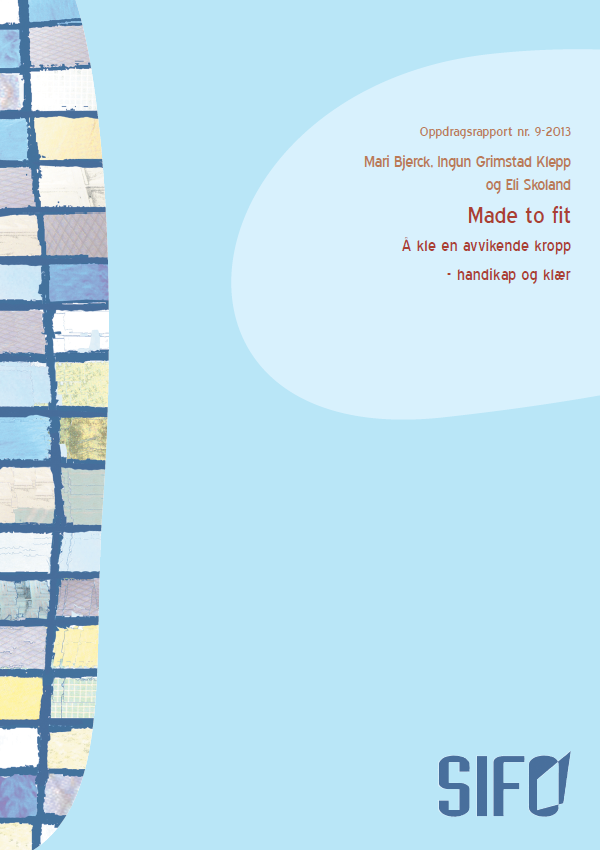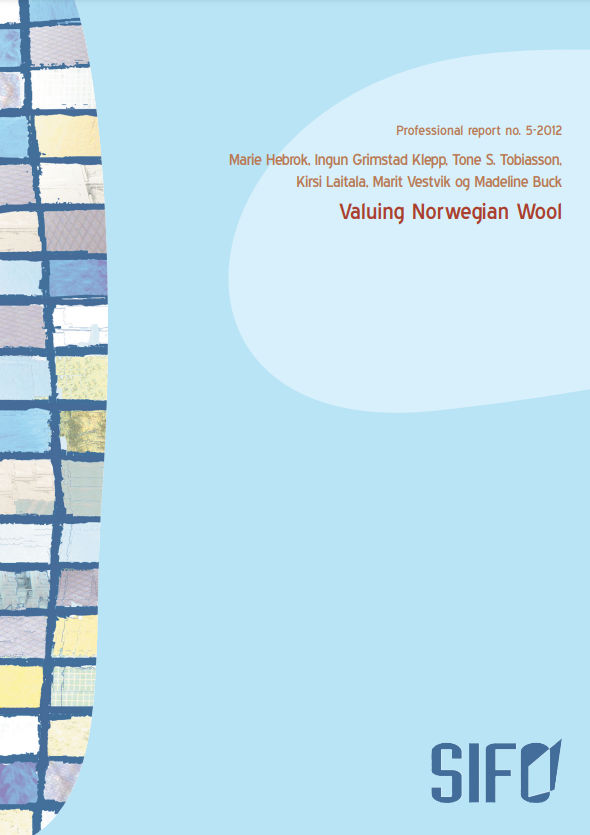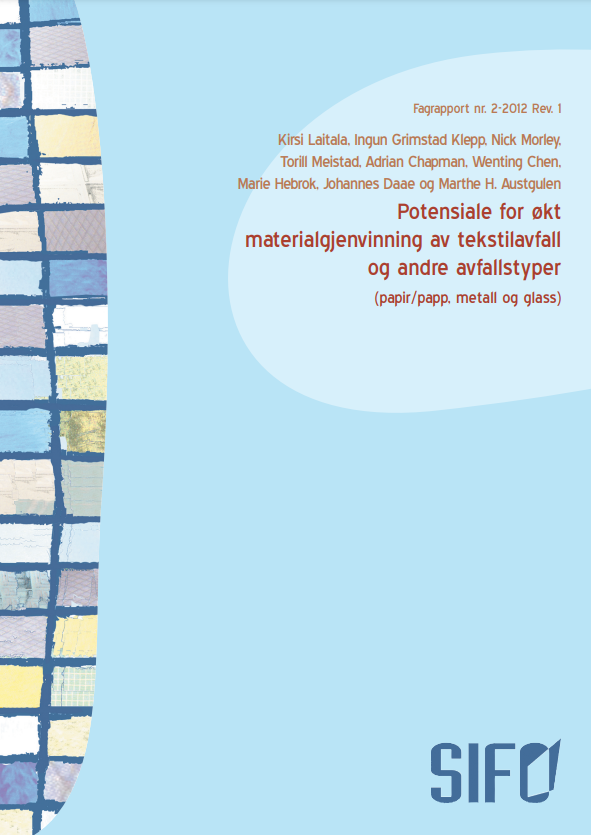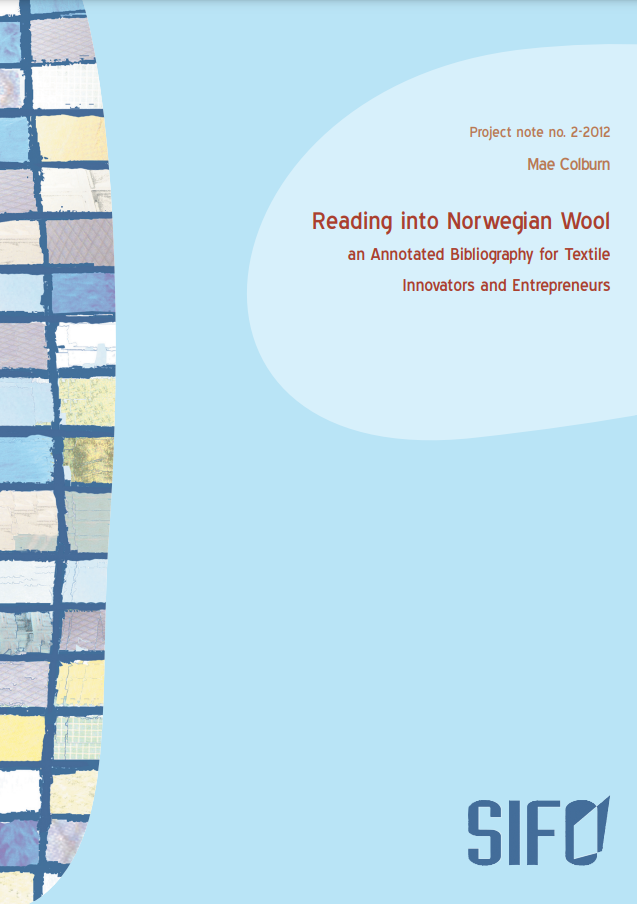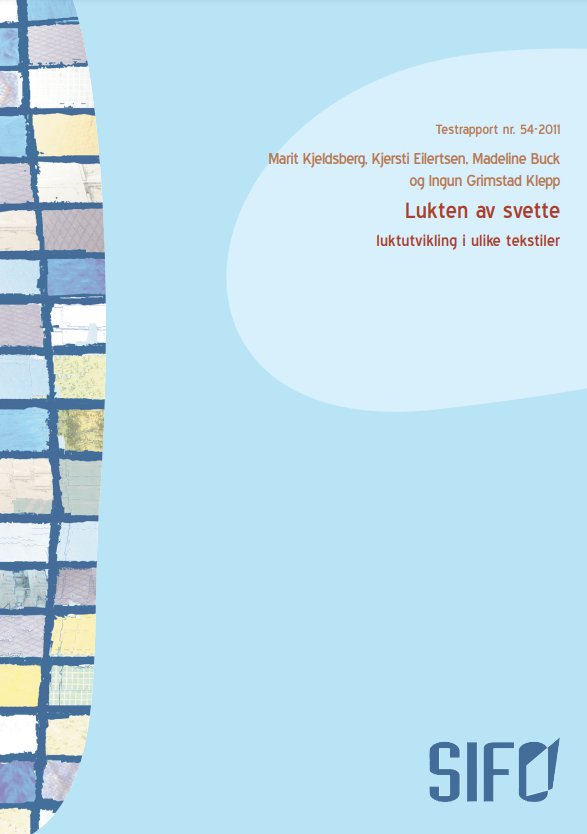Made to fit: Å kle en avvikende kropp- handikap og klær
Mari Bjerck, Ingun Grimstad Klepp og Eli Skoland
Sammendrag
Klær er helt sentralt for menneskers deltakelse i samfunnslivet og for selvfølelse og selvrespekt. Hvor vanskelig det er å kle kroppen avhenger både av den anledningen vi kler oss for og den kroppen som skal kles. I denne rapporten retter vi søkelyset mot klær tilpasset handikappede. Å ha et handikap kan innebære sosiale barrierer og fysiske begrensninger som gjør det vanskelig å finne klær i et marked som i hovedsak tilbyr masseprodusert konfeksjon. For å kartlegge problemet har vi foretatt en litteraturstudie, en brukerundersøkelse og en markedsundersøkelse. Dette er gjort for å finne ut 1) hvilken kunnskap som eksisterer på feltet, 2) hvordan handikappede selv opplever utfordringen med å kle en avvikende kropp og 3) i hvilken grad det finnes et marked for handikapklær og/eller hvorvidt et slikt marked har potensiale som forretningsområde for Fjellrypa.
Rapporten finner at klær er både teknisk og sosialt kompliserte og at i forhold til å kle mennesker med avvikende kropper så blir forholdet mellom de sosiale og tekniske utfordringene konfliktfylte. Brukerundersøkelsen som presenteres i rapporten identifiserer manglende tilpasning av konfeksjonsklær og spesialtilpasset tøy til handikappede. I de daglige valgene som ble tatt vedrørende bekledning oppsto det ofte et dilemma mellom å velge å kle seg pent, varmt, tørt eller å unngå slitasje, i tillegg hadde de aller fleste utfordringer som dreide seg rundt åpne- og lukkemekanismer, og av-og påkledning. Bekledning ble også brukt som strategi for å motivere til bruk av bestemte hjelpemidler eller også som en måte å skjule eller vise handikap. Dette er omtalt både i brukerundersøkelsen og i litteraturstudien. Videre pekte de to kvinnene som sto for innkjøpene av klær i brukerundersøkelsen på en endringsprosess hvor det var viktig å tenke funksjonelt, estetisk og teknisk – samtidig.
Det å kle kroppen estetisk slik at handikappet blir minst mulig synlig vil være viktigere i noen situasjoner, mens det i andre er viktigere med funksjonelle klær enten dette innebærer muligheten for å kle seg selv, eller den måten klærne fungerer i bruk. Dette viser til en viktig ambivalens i bekledningen av handikappede, som blir tydelig både i litteraturstudien og brukerstudien. Flere av de handikappede i studien rapporterte om problemer med å orientere seg i et marked som var så å si ikke-eksisterende og i stor grad preget av få eller uklare støtteordninger, lite eksplisitt og ordnet kunnskapsoverføring, samt få aktører.
Markedsundersøkelsen viser på samme måte til manglende rammebetingelser for handikappedes bekledning, tilgang på hjelpemidler og støtte til ekstrautgifter i forbindelse med klær og utstyr. Den peker også på få etableringer og liten motivasjon for å posisjonere seg innenfor utviklingen av spesialsydd tøy for handikappede. Brukerne på sin side identifiserer stort behov for spesialtilpassede produkter. Å finne gode klær for avvikende kropper kan være en stor utfordring både med hensyn til økonomiske ressurser og evnen til å sette seg inn i de muligheter som eksisterer. Det kan derfor tenkes at det er stor variasjon i hvordan de ulike individene løser bekledning i forhold til sitt handikap. Dette gjelder som sagt ikke bare teknisk-funksjonelle bekledning, men også de sosiokulturelle faktorene som bekledning i forhold til anledning. Slik sett eksisterer det et Made to fit uutnyttet potensial i klær for handikappede, samtidig er det også et behov for mer utførlig forskning og politisk initiativer på feltet.
Har du behov for å lese hele denne rapporten, ta gjerne kontakt med oss.
